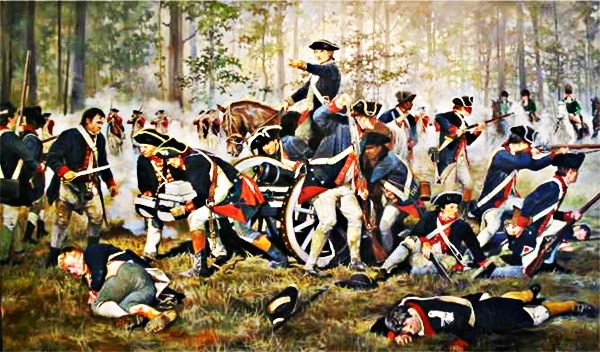
Fort Washington Is Captured on November 16, 1776
Fort Washington Is Captured: On this day in 1776, Hessian Lieutenant General Wilhelm von Knyphausen and a force of 3,000 Hessian mercenaries and 5,000 Redcoats lay siege to Fort Washington at the northern end and highest point of Manhattan Island.
Throughout the morning, Knyphausen met stiff resistance from the Patriot riflemen inside the fort, but by afternoon, the Patriots were overwhelmed, and the garrison commander, Colonel Robert Magaw, surrendered. Nearly 3,000 Patriots were taken prisoner, and valuable ammunition and supplies were lost to the Hessians. The prisoners faced a particularly grim fate: Many later died from deprivation and disease aboard British prison ships anchored in New York Harbor.
Among the 53 dead and 96 wounded Patriots were John and Margaret Corbin of Virginia. When John died in action, his wife Margaret took over his cannon, cleaning, loading and firing the gun until she too was severely wounded. The first woman known to have fought for the Continental Army, Margaret survived, but lost the use of her left arm.
Two weeks earlier, one of Magaw’s officers, William Demont, had deserted the Fifth Pennsylvania Battalion and given British intelligence agents information about the Patriot defense of New York, including details about the location and defense of Fort Washington. Demont was the first traitor to the Patriot cause, and his treason contributed significantly to Knyphausen’s victory.
Fort Washington stood at the current location of Bennet Park in the Washington Heights neighborhood of New York City, near the George Washington Bridge, at the corner of Fort Washington Avenue and 183rd Street. Fort Washington Park and Fort Washington Point lay beneath the site along the Hudson River.
History Channel / Wikipedia / Encyclopedia Britannica /Civil War.org / British Battles
/ Battle of Fort Washington (YouTube search) 
hr class="article-hr">
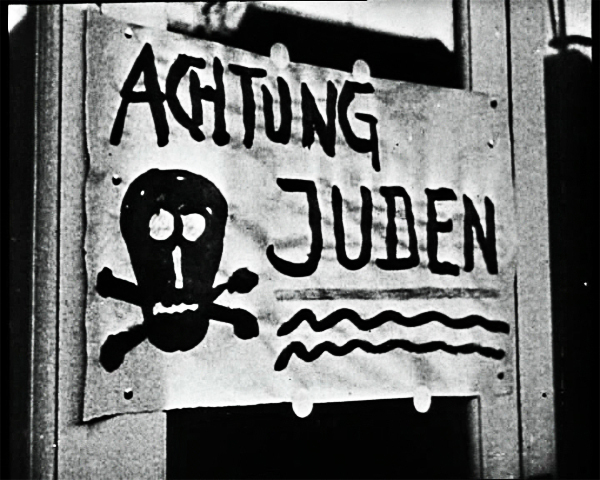
“Kristallnacht” (“Night of Crystal” ), or “The Night of Broken Glass” on November 09, 1938
The Night of Broken Glass: This day in 1938 saw the organized destruction of Jewish businesses and homes in Munich, as well as the beating and murder of Jewish men, women, and children.
It was an exercise in terror that would be called “Kristallnacht”, or “the Night of Broken Glass”, because of the cost of broken glass in looted Jewish shops.
After the countless smashed windows of Jewish-owned establishments, left approximately 100 Jews dead, 7,500 Jewish businesses damaged and hundreds of synagogues, homes, schools and graveyards vandalized. An estimated 30,000 Jewish men were arrested, many of whom were then sent to concentration camps for several months; they were released when they promised to leave Germany. Kristallnacht represented a dramatic escalation of the campaign started by Adolf Hitler in 1933 when he became chancellor to purge Germany of its Jewish population.
The Nazis used the murder of a low-level German diplomat in Paris by a 17-year-old Polish Jew as an excuse to carry out the Kristallnacht attacks. On November 7, 1938, Ernst vom Rath was shot outside the German embassy by Herschel Grynszpan, who wanted revenge for his parents’ sudden deportation from Germany to Poland, along with tens of thousands of other Polish Jews. Following vom Rath’s death, Nazi propaganda minister Joseph Goebbels ordered German storm troopers to carry out violent riots disguised as “spontaneous demonstrations” against Jewish citizens. Local police and fire departments were told not to interfere. In the face of all the devastation, some Jews, including entire families, committed suicide.
In the aftermath of Kristallnacht, the Nazis blamed the Jews and fined them 1 billion marks (or $400 million in 1938 dollars) for vom Rath’s death. As repayment, the government seized Jewish property and kept insurance money owed to Jewish people. In its quest to create a master Aryan race, the Nazi government enacted further discriminatory policies that essentially excluded Jews from all aspects of public life.
Over 100,000 Jews fled Germany for other countries after Kristallnacht. The international community was outraged by the violent events of November 9 and 10. Some countries broke off diplomatic relations in protest, but the Nazis suffered no serious consequences, leading them to believe they could get away with the mass murder that was the Holocaust, in which an estimated 6 million European Jews died.
History Channel / Wikipedia / Encyclopedia Britannica /United States Holocaust Memorial Museum.org
/ Kristallnacht: Night Of Broken Glass (YouTube search) 
hr class="article-hr">
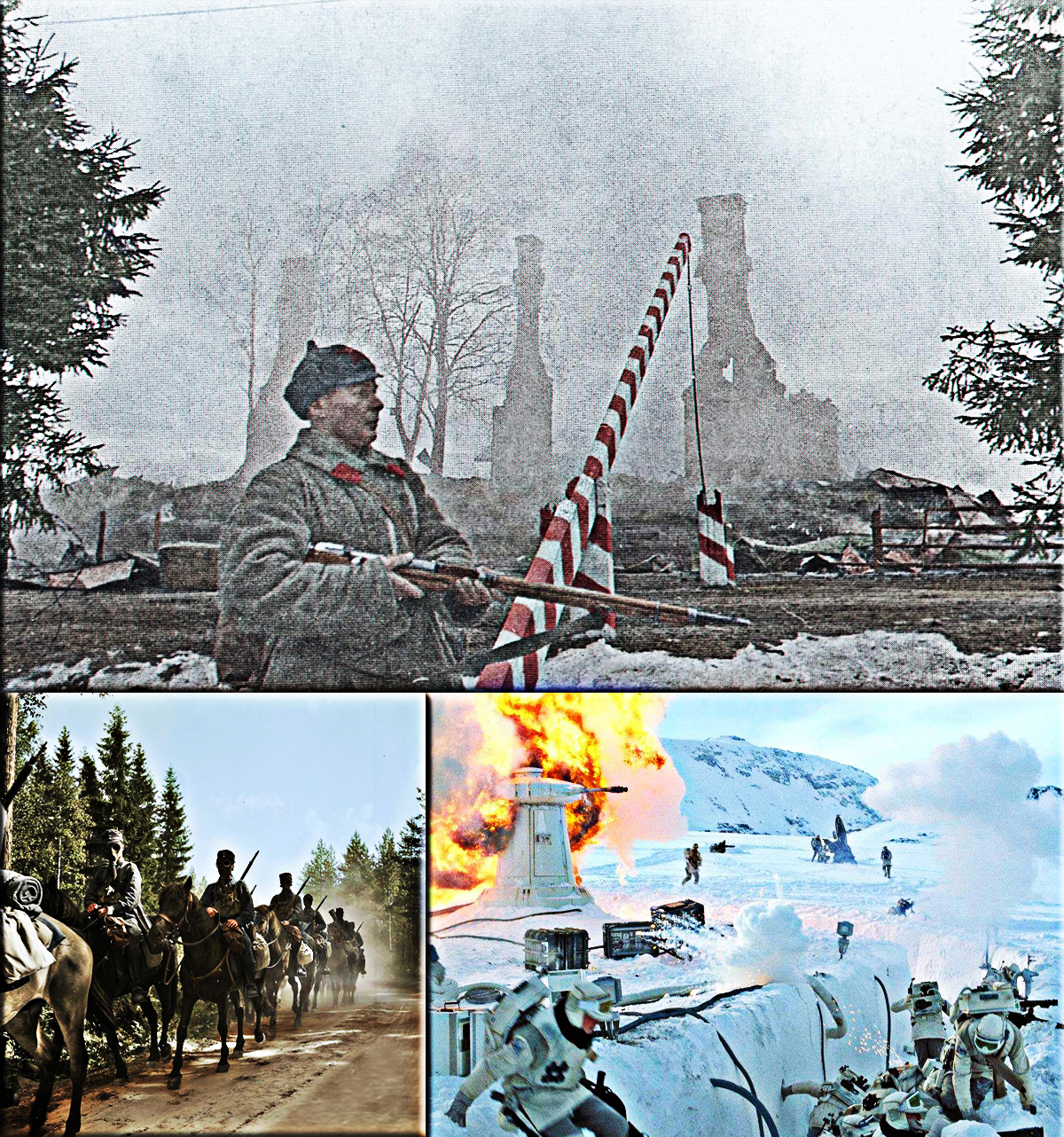
USSR attacks Finland on November 30, 1939
USSR attacks Finland:On this day in 1939, the Red Army crosses the Soviet-Finnish border with 465,000 men and 1,000 aircraft. Helsinki was bombed, and 61 Finns were killed in an air raid that steeled the Finns for resistance, not capitulation.
The overwhelming forces arrayed against Finland convinced most Western nations, as well as the Soviets themselves, that the invasion of Finland would be a cakewalk. The Soviet soldiers even wore summer uniforms, despite the onset of the Scandinavian winter; it was simply assumed that no outdoor activity, such as fighting, would be taking place. But the Helsinki raid had produced many casualties-and many photographs, including those of mothers holding dead babies, and preteen girls crippled by the bombing. Those photos were hung up everywhere to spur on Finn resistance. Although that resistance consisted of only small numbers of trained soldiers-on skis and bicycles!–fighting it out in the forests, and partisans throwing Molotov cocktails into the turrets of Soviet tanks, the refusal to submit made headlines around the world.
President Roosevelt quickly extended $10 million in credit to Finland, while also noting that the Finns were the only people to pay back their World War I war debt to the United States in full. But by the time the Soviets had a chance to regroup, and send in massive reinforcements, the Finnish resistance was spent. By March 1940, negotiations with the Soviets began, and Finland soon lost the Karelian Isthmus, the land bridge that gave access to Leningrad, which the Soviets wanted to control.
History Channel / Wikipedia / Encyclopedia Britannica /Uralica / The Atlantic
/ Finland WWII in color 1939 (YouTube search) 
hr class="article-hr">
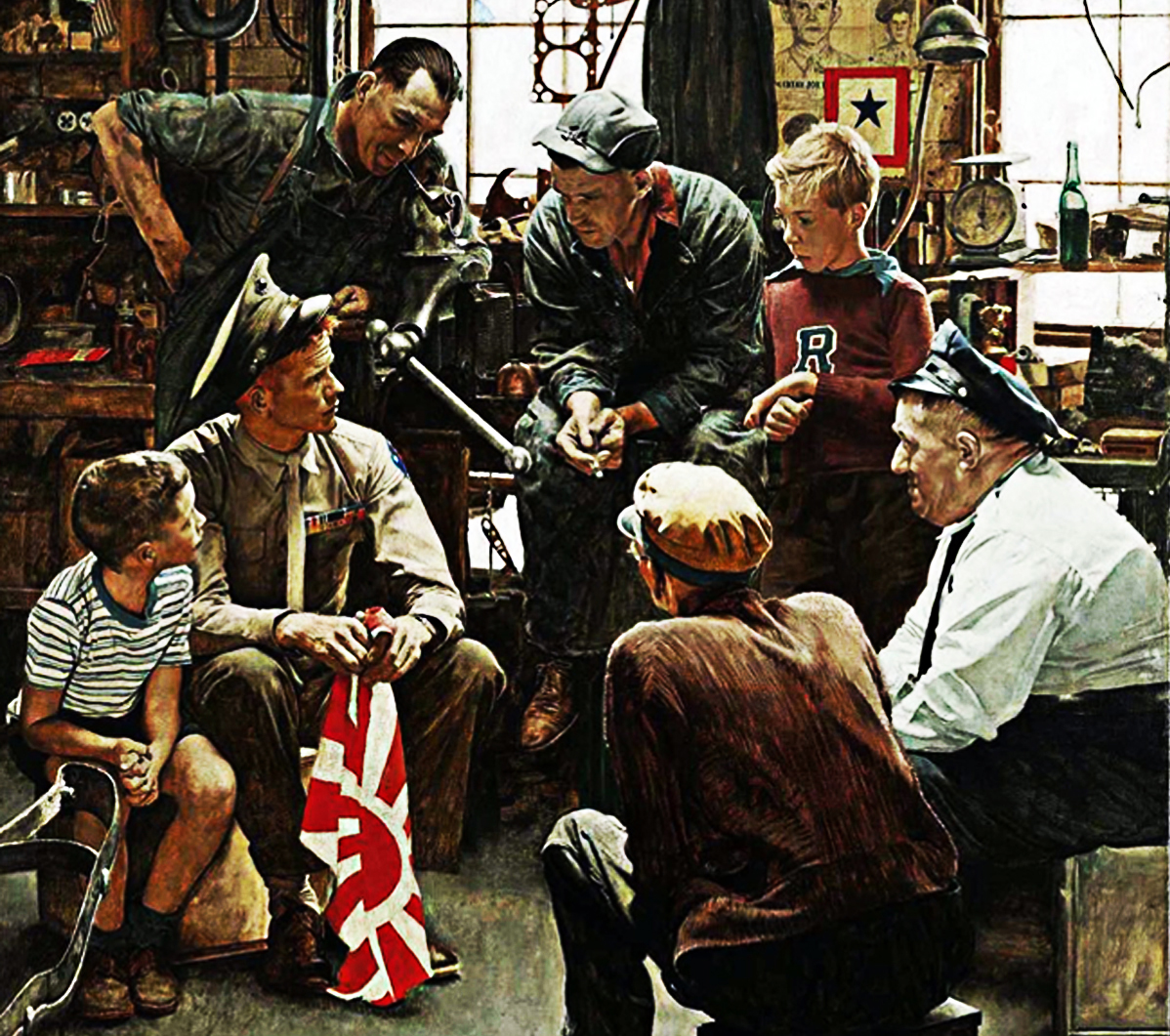
Understanding Military Terminology
Request For Assistance
(DOD) Any suspected or alleged violation of Department of Defense policy or of other related orders, policies, procedures or applicable law, for which there is credible information.
Joint Publications (JP 3-63) Detainee Operations - Intelligence Resource Program
Request For Information
(DOD) 1.Any specific time-sensitive ad hoc requirement for intelligence information or products to support an ongoing crisis or operation not necessarily related to standing requirements or scheduled intelligence production.
2. A term used by the National Security Agency/Central Security Service to state ad hoc signals intelligence requirements.
Also called RFI.
See also Intelligence.
Joint Publications (JP 2-0) Joint Intelligence
Required Delivery Date
(DOD) The date that a force must arrive at the destination and complete unloading.
Also called RDD.
Joint Publications (JP 5-0) Joint Planning
Joint Publication - Department of Defense Dictionary of Military and Associated Terms
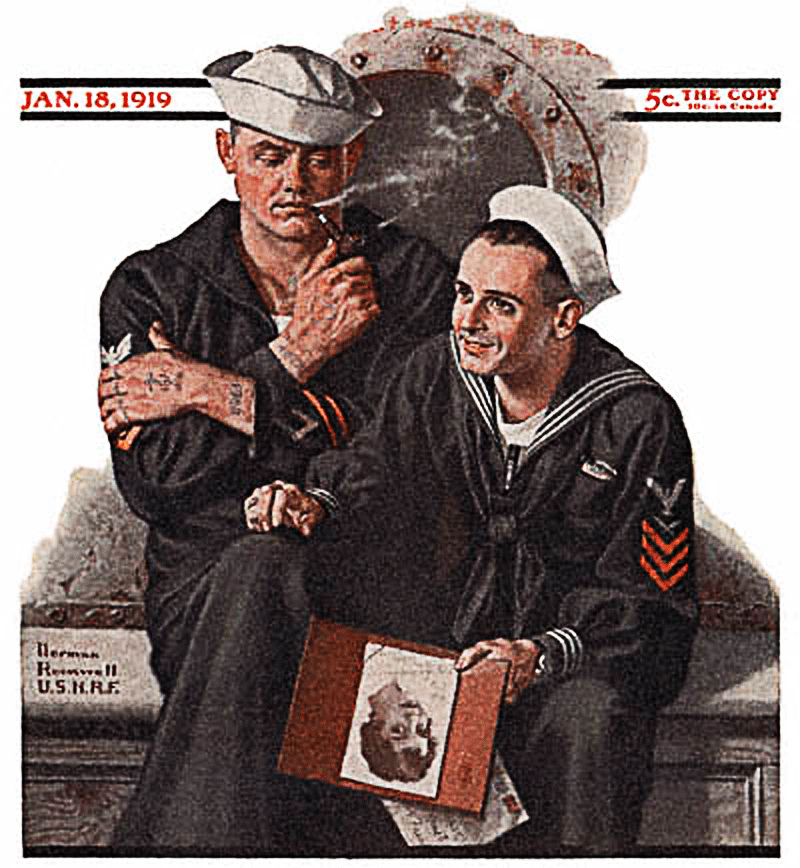
The Old Salt’s Corner
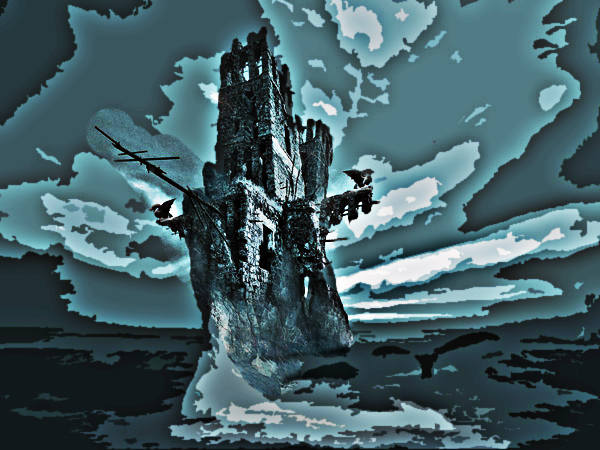
“Ghost Ship Omen”
Scientists say it’s just a mirage,
but sailors claim the ghost ship floats
in air, with stormy seas below.
Again he tries to round Cape Hope.
Captain van der Decken angered God
one savage 18th Century night.
Vowed he’d sail till “Judgment Day”,
to cross the Table Bay, he’d fight.
The Flying Dutchman disappeared
sank deep in foggy, wind-swept sea,
but the captain’s doomed to walk the deck
each night in perpetuity.
King George the Fifth, the Prince of Wales
are two who saw the Dutchman.
Although these royal heirs survived,
most meet death - the captain’s omen.
His curse prevails in Wagner’s Opera
and Washington Irving’s story;
crews tremble, ghost ship emerges
Dutchman floats in frightening glory.
So many sailors and their ships
still meet demise on starless nights,
when demons steer the Dutchman
and a vengeful God reads last rites.
Till this day the Flying Dutchman
looms threatening on a ravaged sea.
For Judgment Day the captain waits,
luring crews to their destiny.
~ Carolyn Devonshire

“Thought for the Day”
“Guests, like fish, begin to smell after three days.”
“An investment in knowledge pays the best interest.”
“Early to bed and early to rise makes a man healthy, wealthy and wise.”
“A place for everything, everything in its place.”
“If passion drives you, let reason hold the reins.”
“He that is good for making excuses is seldom good for anything else.”
“Any fool can criticize, condemn and complain - and most fools do.”
“He who falls in love with himself will have no rivals.”
“In this world nothing can be said to be certain,
except death and taxes.”
“Without freedom of thought,
there can be no such thing as wisdom -
and no such thing as public liberty without freedom of speech.”
“We must, indeed,
“all hang together or, most assuredly,
we shall all hang separately.”
“Be at war with your vices,
at peace with your neighbors,
and let every new year find you a better man.”
“Tell me and I forget.
Teach me and I remember.
Involve me and I learn.”
~ Benjamin Franklin
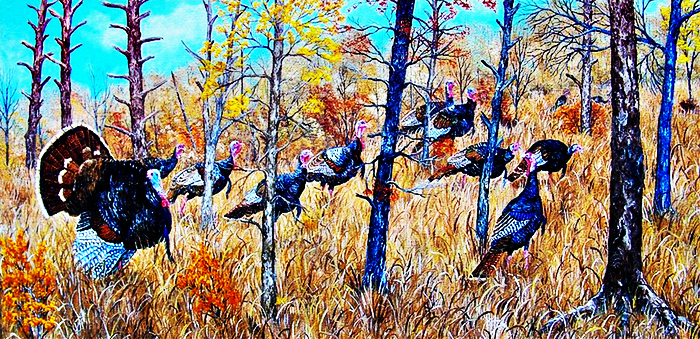
Mr. Answer Man Please Tell Us: Thanksgiving 2023
Thanksgiving Day is a national holiday in the United States, and Thanksgiving 2022 occurs on Thursday, November 24. In 1621, the Plymouth colonists and Wampanoag Indians shared an autumn harvest feast that is acknowledged today as one of the first Thanksgiving celebrations in the colonies. For more than two centuries, days of thanksgiving were celebrated by individual colonies and states. It wasn’t until 1863, in the midst of the Civil War, that President Abraham Lincoln proclaimed a national Thanksgiving Day to be held each November.
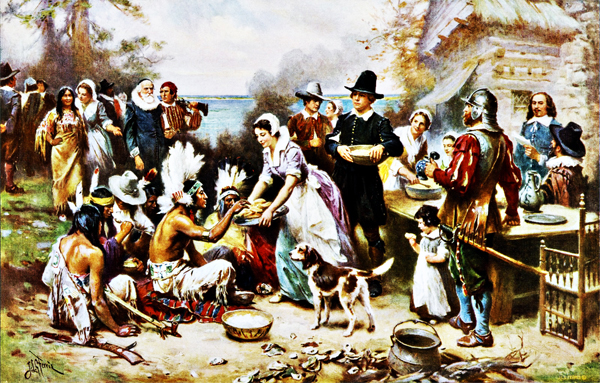
Thanksgiving at Plymouth
In September 1620, a small ship called the Mayflower left Plymouth, England, carrying 102 passengers—an assortment of religious separatists seeking a new home where they could freely practice their faith and other individuals lured by the promise of prosperity and land ownership in the New World.
After a treacherous and uncomfortable crossing that lasted 66 days, they dropped anchor near the tip of Cape Cod, far north of their intended destination at the mouth of the Hudson River. One month later, the Mayflower crossed Massachusetts Bay, where the Pilgrims, as they are now commonly known, began the work of establishing a village at Plymouth.
Did you know? Lobster, seal and swans were on the Pilgrims' menu.
Throughout that first brutal winter, most of the colonists remained on board the ship, where they suffered from exposure, scurvy and outbreaks of contagious disease. Only half of the Mayflower’s original passengers and crew lived to see their first New England spring.
In March, the remaining settlers moved ashore, where they received an astonishing visit from an Abenaki Indian who greeted them in English. Several days later, he returned with another Native American, Squanto, a member of the Pawtuxet tribe who had been kidnapped by an English sea captain and sold into slavery before escaping to London and returning to his homeland on an exploratory expedition. Squanto taught the Pilgrims, weakened by malnutrition and illness, how to cultivate corn, extract sap from maple trees, catch fish in the rivers and avoid poisonous plants. He also helped the settlers forge an alliance with the Wampanoag, a local tribe, which would endure for more than 50 years and tragically remains one of the sole examples of harmony between European colonists and Native Americans.
In November 1621, after the Pilgrims’ first corn harvest proved successful, Governor William Bradford organized a celebratory feast and invited a group of the fledgling colony’s Native American allies, including the Wampanoag chief Massasoit.
Now remembered as American’s “first Thanksgiving” - although the Pilgrims themselves may not have used the term at the time—the festival lasted for three days. While no record exists of the historic banquet’s exact menu, the Pilgrim chronicler Edward Winslow wrote in his journal that Governor Bradford sent four men on a “fowling” mission in preparation for the event, and that the Wampanoag guests arrived bearing five deer. Historians have suggested that many of the dishes were likely prepared using traditional Native American spices and cooking methods. Because the Pilgrims had no oven and the Mayflower’s sugar supply had dwindled by the fall of 1621, the meal did not feature pies, cakes or other desserts, which have become a hallmark of contemporary celebrations.
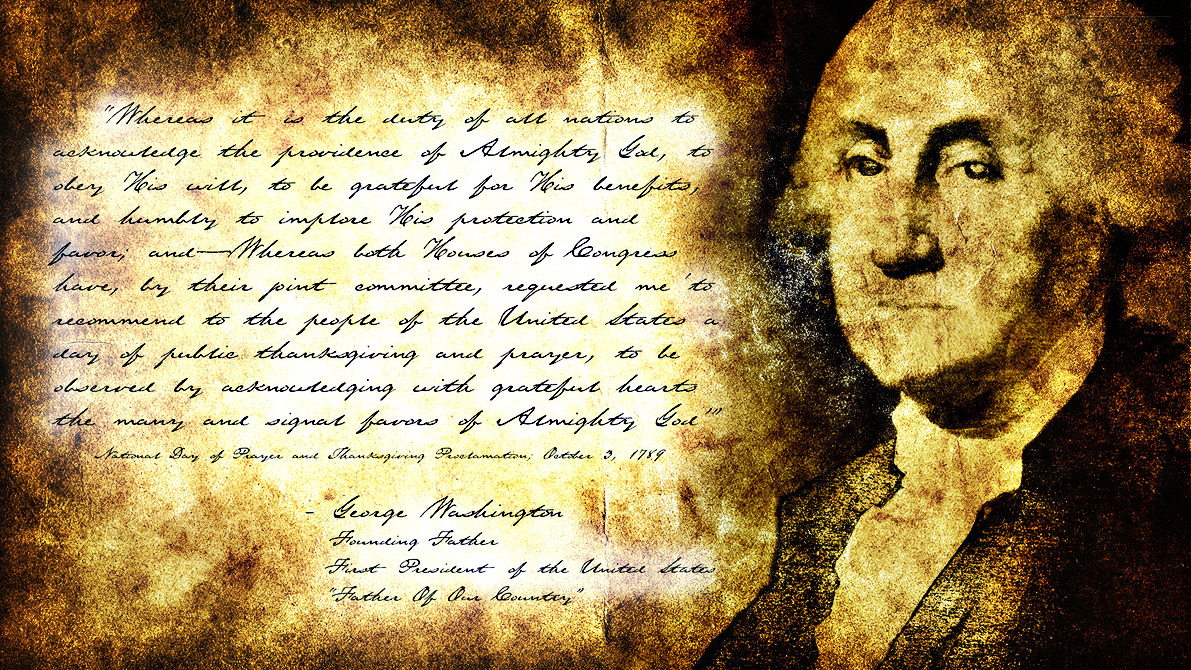
Thanksgiving Becomes an Official Holiday
Pilgrims held their second Thanksgiving celebration in 1623 to mark the end of a long drought that had threatened the year’s harvest and prompted Governor Bradford to call for a religious fast.
Days of fasting and thanksgiving on an annual or occasional basis became common practice in other New England settlements as well. During the American Revolution, the Continental Congress designated one or more days of thanksgiving a year, and in 1789 George Washington issued the first Thanksgiving proclamation by the national government of the United States;
in it, he called upon Americans to express their gratitude for the happy conclusion to the country’s war of independence and the successful ratification of the U.S. Constitution. His successors John Adams and James Madison also designated days of thanks during their
In 1817, New York became the first of several states to officially adopt an annual Thanksgiving holiday; each celebrated it on a different day, however, and the American South remained largely unfamiliar with the tradition. In 1827, the noted magazine editor and prolific writer Sarah Josepha Hale—author, among countless other things, of the nursery rhyme “Mary Had a Little Lamb”—launched a campaign to establish Thanksgiving as a national holiday.
For 36 years, she published numerous editorials and sent scores of letters to governors, senators, presidents and other politicians. Abraham Lincoln finally heeded her request in 1863, at the height of the Civil War, in a proclamation entreating all Americans to ask God to “commend to his tender care all those who have become widows, orphans, mourners or sufferers in the lamentable civil strife” and to “heal the wounds of the nation.” He scheduled Thanksgiving for the final Thursday in November, and it was celebrated on that day every year until 1939, when Franklin D. Roosevelt moved the holiday up a week in an attempt to spur retail sales during the Great Depression. Roosevelt’s plan, known derisively as Franksgiving, was met with passionate opposition, and in 1941 the president reluctantly signed a bill making Thanksgiving the fourth Thursday in November.
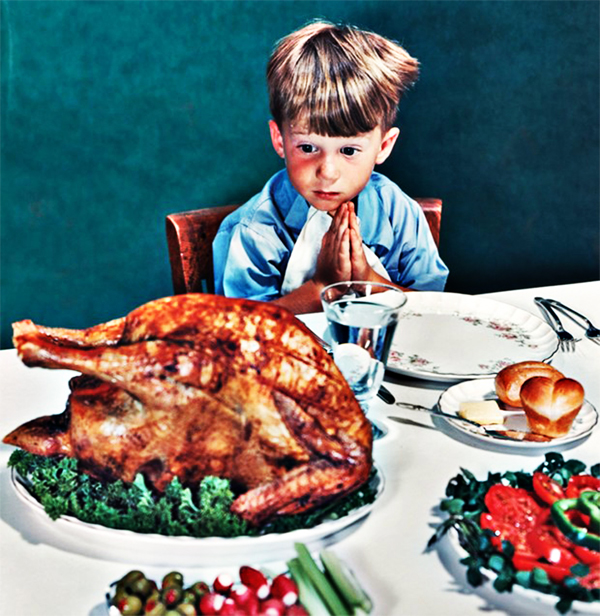
Thanksgiving Traditions
In many American households, the Thanksgiving celebration has lost much of its original religious significance; instead, it now centers on cooking and sharing a bountiful meal with family and friends. Turkey, a Thanksgiving staple so ubiquitous it has become all but synonymous with the holiday, may or may not have been on offer when the Pilgrims hosted the inaugural feast in 1621. Today, however, nearly 90 percent of Americans eat the bird - whether roasted, baked or deep-fried - on Thanksgiving, according to the National Turkey Federation. Other traditional foods include stuffing, mashed potatoes, cranberry sauce and pumpkin pie. Volunteering is a common Thanksgiving Day activity, and communities often hold food drives and host free dinners for the less fortunate.
Parades have also become an integral part of the holiday in cities and towns across the United States. Presented by Macy’s department store since 1924, New York City’s Thanksgiving Day parade is the largest and most famous, attracting some 2 to 3 million spectators along its 2.5-mile route and drawing an enormous television audience. It typically features marching bands, performers, elaborate floats conveying various celebrities and giant balloons shaped like cartoon characters.
Beginning in the mid-20th century and perhaps even earlier, the president of the United States has “pardoned” one or two Thanksgiving turkeys each year, sparing the birds from slaughter and sending them to a farm for retirement. A number of U.S. governors also perform the annual turkey pardoning ritual.
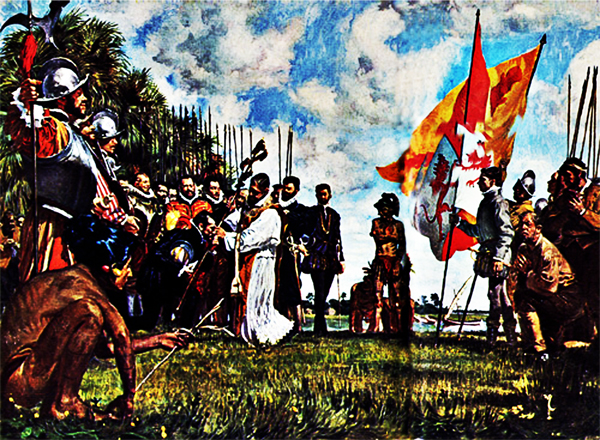
Thanksgiving Controversies
For some scholars, the jury is still out on whether the feast at Plymouth really constituted the first Thanksgiving in the United States. Indeed, historians have recorded other ceremonies of thanks among European settlers in North America that predate the Pilgrims’ celebration. In 1565, for instance, the Spanish explorer Pedro Menéndez de Avilé invited members of the local Timucua tribe to a dinner in St. Augustine, Florida, after holding a mass to thank God for his crew’s safe arrival. On December 4, 1619, when 38 British settlers reached a site known as Berkeley Hundred on the banks of Virginia’s James River, they read a proclamation designating the date as “a day of thanksgiving to Almighty God”.
Some Native Americans and others take issue with how the Thanksgiving story is presented to the American public, and especially to schoolchildren. In their view, the traditional narrative paints a deceptively sunny portrait of relations between the Pilgrims and the Wampanoag people, masking the long and bloody history of conflict between Native Americans and European settlers that resulted in the deaths of millions. Since 1970, protesters have gathered on the day designated as Thanksgiving at the top of Cole’s Hill, which overlooks Plymouth Rock, to commemorate a “National Day of Mourning”. Similar events are held in other parts of the country.
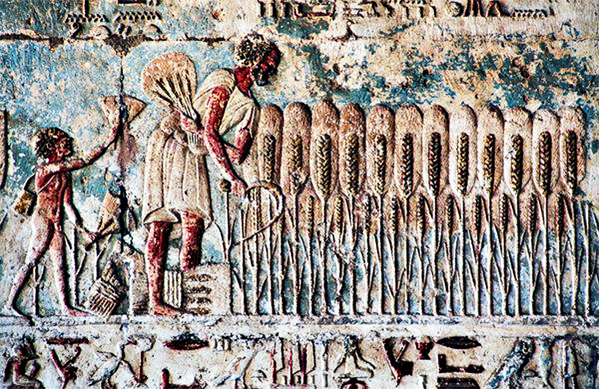
Thanksgiving’s Ancient Origins
Although the American concept of Thanksgiving developed in the colonies of New England, its roots can be traced back to the other side of the Atlantic. Both the Separatists who came over on the Mayflower and the Puritans who arrived soon after brought with them a tradition of providential holidays - days of fasting during difficult or pivotal moments and days of feasting and celebration to thank God in times of plenty.
As an annual celebration of the harvest and its bounty, moreover, Thanksgiving falls under a category of festivals that spans cultures, continents and millennia. In ancient times, the Egyptians, Greeks and Romans feasted and paid tribute to their gods after the fall harvest. Thanksgiving also bears a resemblance to the ancient Jewish harvest festival of Sukkot. Finally, historians have noted that Native Americans had a rich tradition of commemorating the fall harvest with feasting and merrymaking long before Europeans set foot on their shores.
History Channel
• National Geographic
• Quara
• Thanksgiving
• Wikipedia
hr class="article-hr">

NAVSPEAK aka U.S. Navy Slang
AW: The enlisted rating previously known as Aviation Anti-submarine Warfare Operator, now known as Aviation Warfare Operator; sometimes preceded by the adjective “fuckin'” by non-aircrew sailors.
AWOL: Absent Without Official Leave; this is a U.S. Army and USAF term, not a Navy term, see UA.
AX: The enlisted rating Aviation Anti-Submarine Warfare Technician; since merged into AT rating.
Aye: Yes (I understand).
Aye, Aye: Yes (I heard the order, I understand the order, and I intend to obey/carry out the order). “I understand and I will comply.”
Wiktionary.org

Just for you MARINE
Aviation Units: See also active squadrons, decommissioned squadrons, & aviation support units
HAMS: Headquarters and Maintenance Squadron, also H&MS
HMA: Marine Attack Helicopter Squadron
HMH: Marine Heavy Helicopter Squadron
HMHT: Marine Heavy Helicopter Training Squadron
HML: Marine Light Helicopter Squadrons
HMLA: Headquarters and Maintenance Squadron, also H&MS
HMLAT: Marine Light Attack Helicopter Training Squadron
HMM: Marine Medium Helicopter Squadron (formerly HMR)
HMMT: Marine Medium Helicopter Training Squadron
HMR: Marine Helicopter Transport Squadron
HMT: Marine Helicopter Training Squadron (General designation prior to specific communities (i.e. HMHT(CH-53), HMLAT(H-1))
HMX-1: Marine Helicopter Squadron One (divided into operational test & Executive transport support)
LAAD Bn: Low-altitude Air Defense Battalion
MABS: Marine Air Base Squadron
MACG: Marine Air Command Group
MACS: Marine Air Control Squadron
MAMS: Marine Aircraft Maintenance Squadron
MASS: Marine Air Support Squadronn
MALS: Marine Aviation Logistics Squadron
MATCS: Marine Air Traffic Control Squadron
MCAS: Marine Corps Air Station
MOTS: Marine Operational Training Squadrons
MTACS: Marine Tactical Air Command Squadron
MWSS: Marine Wing Support Squadron
MWCS: Marine Wing Communications Squadron
MWHS: Marine Wing Headquarters Squadron
MWSG: Marine Wing Support Group
SOES: Station Operations and Engineer Squadron
VMAQ: Marine Tactical Electronic Warfare Squadron
VMA: Marine Attack Squadron
VMAT: Marine Attack Training Squadron
VMB: Marine Bombing Squadron
VMC: Marine Composite Squadron
VMCJ: Marine Composite Reconnaissance Squadron
VMD: Marine Photographic Squadron
VMF: Marine Fighter Squadron
VMF:Marine Night Fighter Squadron
VMFA: Marine Fighter Attack Squadron
VMFA(AW): Marine All-Weather Fighter Attack Squadron
VMFAT: Marine Fighter Attack Training Squadron
VMFP: Marine Tactical Reconnaissance Squadron
VMGR: Marine Aerial Refueler/Transport Squadron
VMGRT: Marine Aerial Refueler/Transport Training Squadron
VMJ: Marine Reconnaissance Squadron / Marine Target Towing Detachments
VML: Marine Glider Squadron
VMM: Marine Medium Tiltrotor Squadron (formerly HMM, HMH & VMFA)
VMMT: Marine Medium Tiltrotor Training Squadron (formerly HMMT)
VMO: Marine Observation Squadro
VMP: Marine Patrol Squadron
VMR: Marine Transport Squadron
VMS: Marine Scouting Squadron
VMSB: Marine Scout Bombing Squadron
VMTB: Marine Torpedo Bombing Squadron
VMTD: Marine Target Towing Detachment
VMU: Unmanned Aerial Vehicle Squadron
VMX: Marine Tiltrotor Operational Test and Evaluation Squadron
WES:Wing Engineer Squadron
WTS: Wing Transport Squadron
ZMQ: Marine Barrage Balloon Squadrons
Aye, Aye: Nautical term used as a response to orders meaning “I understand the orders I have received and will carry them out”; aye (descended from Middle English yai) dialectical for “yes”, once common in the regions from which the Royal Navy drew its sailors.
Wikipedia.org
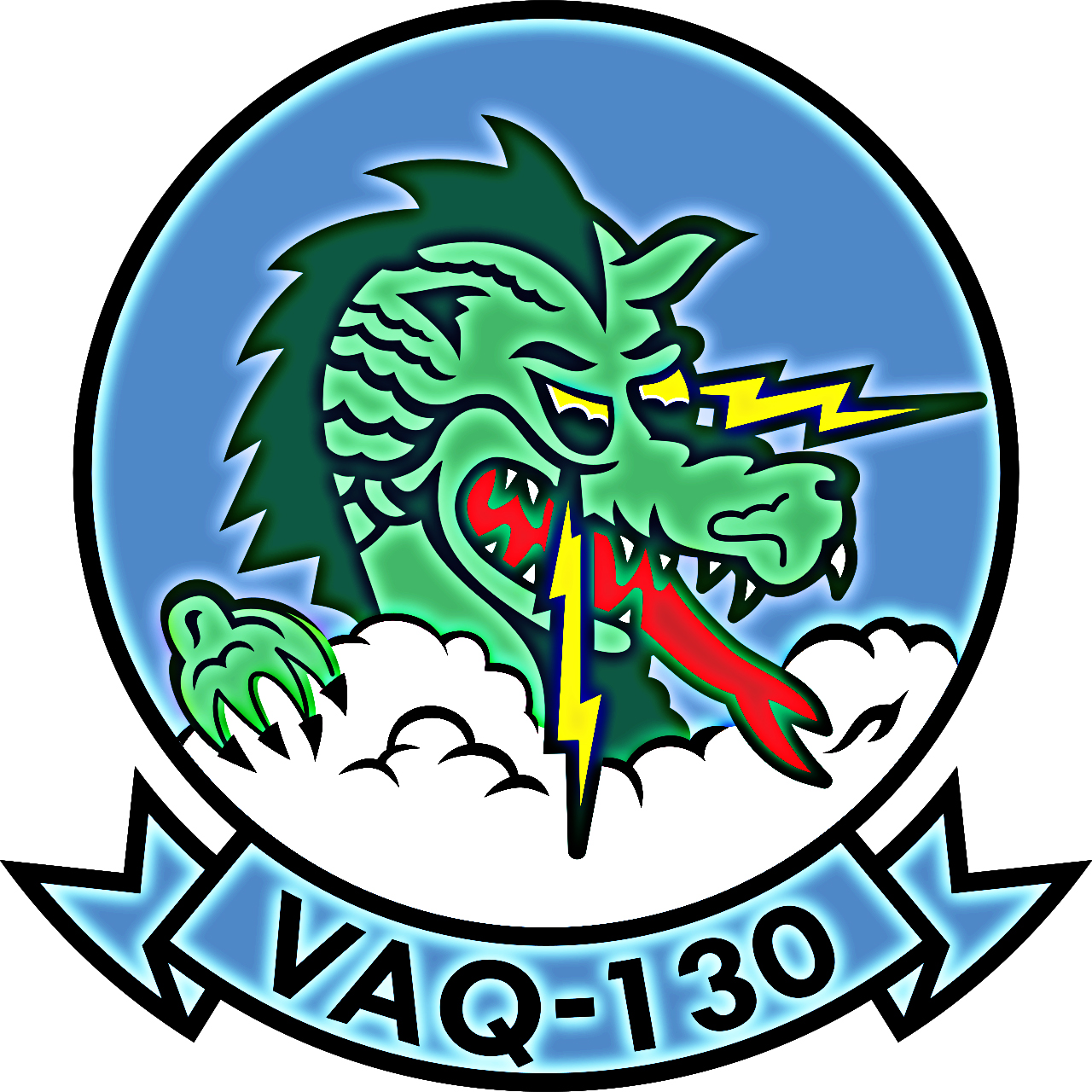
Naval Aviation Squadron Nicknames
Electronic Attack Squadron 130 (VAQ-130) - nicknamed the “Zappers”
United States Navy - Naval Air Station Whidbey Island, in Puget Sound, Washington.
List of United States Navy aircraft squadrons - Wikipedia.org

Where Did That Saying Come From?

“Let your hair down” Meaning: To relax or be at ease. Behave in a free or uninhibited manner.
Origin: Parisian nobles risked condemnation from their peers if they appeared in public without an elaborate hairdo. Some of the more intricate styles required hours of work, so of course it was a relaxing ritual for these aristocrats to come home at the end of a long day and let their hair down.
Letting one's hair down was a commonplace part of womens' daily activities in the 17th century. The hair was normally pinned up and was let down for brushing or washing. The term used for this at the time was dishevelling. Anyone who is unkempt and generally untidy might now be described as dishevelled but then it applied specifically to hair which was unpinned. The first reference I can find which refers specifically to this is John Cotgrave's, The English treasury of wit and language, 1655:
“Descheveler, to discheuell; to pull the haire about the eares.”
Phrases.org UK

Science & Technology
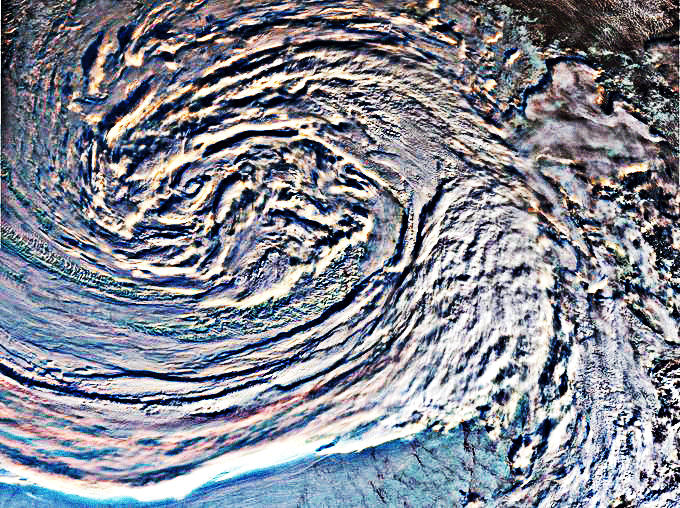
FEATURE: New study suggests cyclones in the Arctic are forming more often and getting stronger
• Astronomers discover new almost dark galaxy
A new formula to calculate the strength of thin conical structures
• Unlocking pathways to break down problem proteins presents new treatment opportunities
• Rider on the storm: Shearwater seabird catches an 11-hour ride over 1,000 kilometers in a typhoon
Scientists isolate early-warning tremor pattern in lab-made earthquakes
• Sabotage tool takes on AI image scrapers
• Air pollution linked to postpartum depression in large Southern California cohort
A robot that can detect subtle noises in its surroundings and use them to localize nearby humans
• Pottery becomes water treatment device for Navajo nation
• Political rhetoric changes views on democratic principles, study finds
Phys.org / MedicalXpress / TechXplore
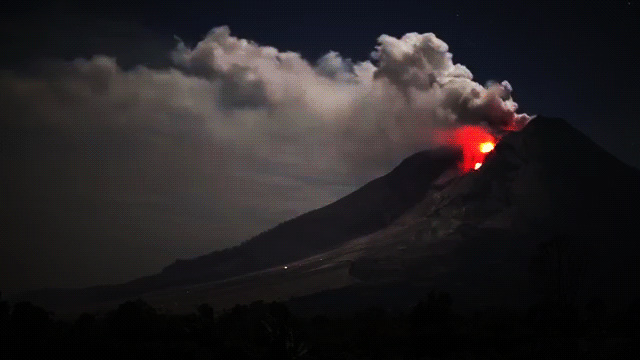
FEATURE: Volcanic eruptions found to dampen Indian Ocean El Niño events for up to 8 years
• Scientists demonstrate electric control of atomic spin transitions
Earliest evidence of flip flops in the Middle Stone Age
• Meltwater flowing beneath Antarctic glaciers may be accelerating their retreat
• Underwater robot finds new circulation pattern in Antarctic ice shelf
Scratch my back, I'll scratch yours: Baboons wily cooperators
• New analysis in Science explores artificial intelligence and interspecific law
• Mechanics of breast cancer metastasis discovered, offering target for treatment
Your smart speaker data is used in ways you might not expect
• Applying a neuroscientific lens to the feasibility of artificial consciousness
• Bringing a shark to a knife fight: 7,000-year-old shark-tooth knives discovered in Indonesia
Phys.org / MedicalXpress / TechXplore


SONG FACTS
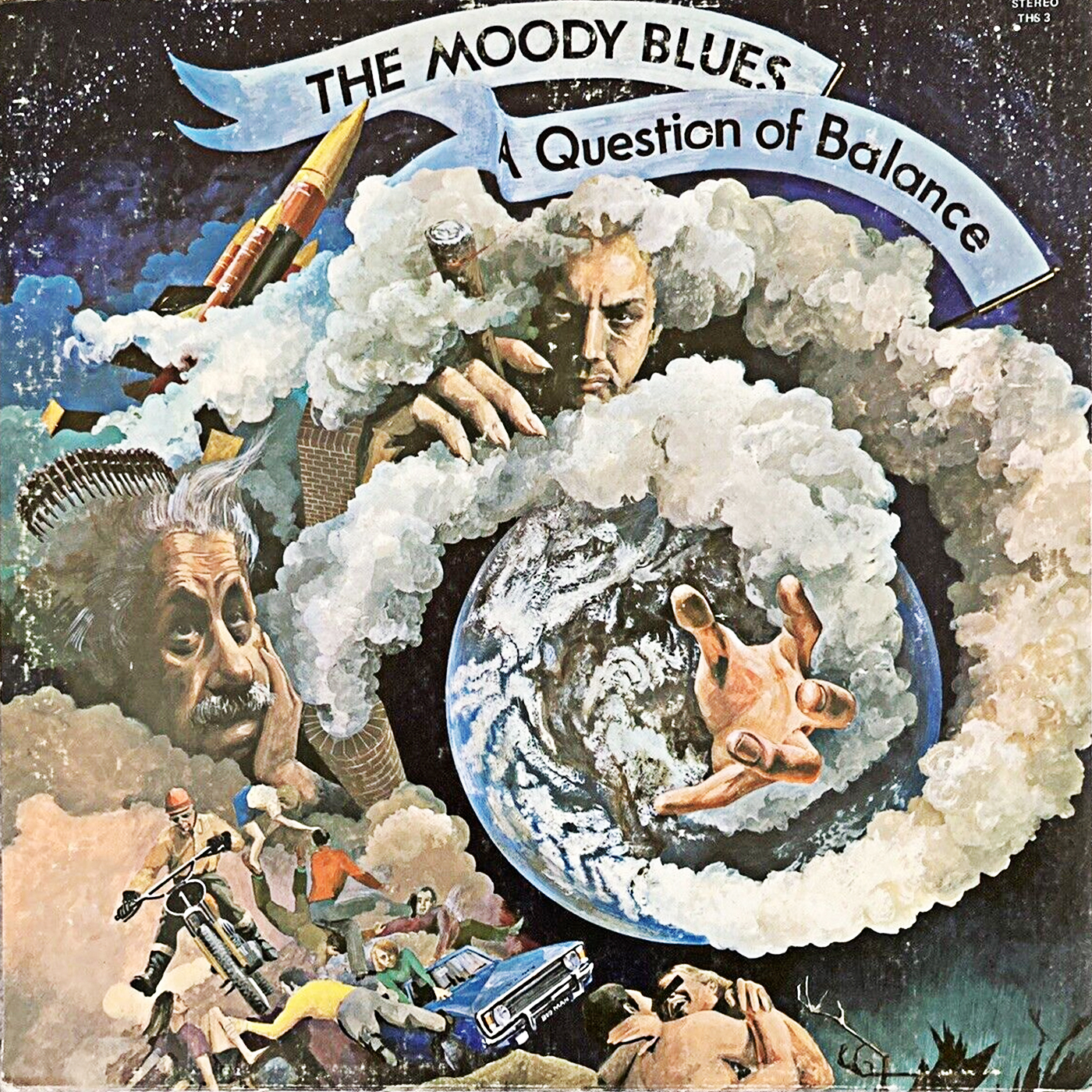
“Question”  - The Moody Blues
- The Moody Blues
Album: A Question Of Balance
Released 1970 
The Moody Blues guitarist/vocalist Justin Hayward wrote
“Question”  which reflected the thoughts of many young people who were questioning the war in Vietnam. He told Songfacts:
which reflected the thoughts of many young people who were questioning the war in Vietnam. He told Songfacts:
“We'd achieved great success in the United States and we were playing a lot of student venues and colleges, and the student audience was our audience. We were mixing with these people and seeing how different the problems were for them and the issues in being a member of the greatest nation on earth:
The United States. How different they were from British people. I was just expressing my frustration around that, around the problems of anti-war and things that really concerned them, and for their own future that they may be conscripted. How that would morally be a dilemma for them and that kind of stuff. So it did really come out of that.
And my own particular anger at what was happening. After a decade of peace and love, it still seemed we hadn't made a difference in 1970. I suppose that was the theme of the song. And then the slow part of the song is really a reflection of that and not feeling defeated, but almost a quiet reflection of it, and mixing with a bit of a love song, as well.”
This was the opening track on the “A Question Of Balance (album)”, and at one point it was going to be the title track. The song was recorded several months earlier than the other tracks on the album and its title was shortened from “Question Of Balance” to “"Question”.
In the liner notes of the 1997 remastered CD, Justin Hayward wrote:
“Sometime before we taped the album, we (documented) ‘Question’, which was a song that I didn't have on Friday night for a session (the next day). But, by the morning, I had it and it was recorded very quickly.” Hayward adds that it was “Recorded live, with no overdubbing or double-tracking, just a bit of echo.&rdquo
In the UK, this became the group's biggest hit for their classic lineup. Before John Lodge and Justin Hayward joined the group in 1966, they had a #1 UK hit with
“Go Now”  "."
"."
“Question”  is a concert mainstay of The Moody Blues, which is fine with Justin Hayward, who tells us he never loses the emotion for it when he performs the tune. It's also a song that has remained relevant. Says Hayward:
is a concert mainstay of The Moody Blues, which is fine with Justin Hayward, who tells us he never loses the emotion for it when he performs the tune. It's also a song that has remained relevant. Says Hayward:
“There's no doubt that it still resonates, the lyrics reflect whichever generation you're in. Whatever time you're in, people are experiencing those emotions. And I find that people identify with it at any age.”
Many of the songs Justin Hayward wrote for The Moody Blues don't have obvious titles -
“The Voice”  ,
for instance. This song is another one without a natural title where he chose a word from the lyrics to represent it.
,
for instance. This song is another one without a natural title where he chose a word from the lyrics to represent it.
Fish, who is the ex-lead singer of the UK rock group Marillion, recorded
“Question”  on his 1995 LP Songs From The Mirror.
on his 1995 LP Songs From The Mirror.
“Question” - The Moody Blues 1970) Continued ...
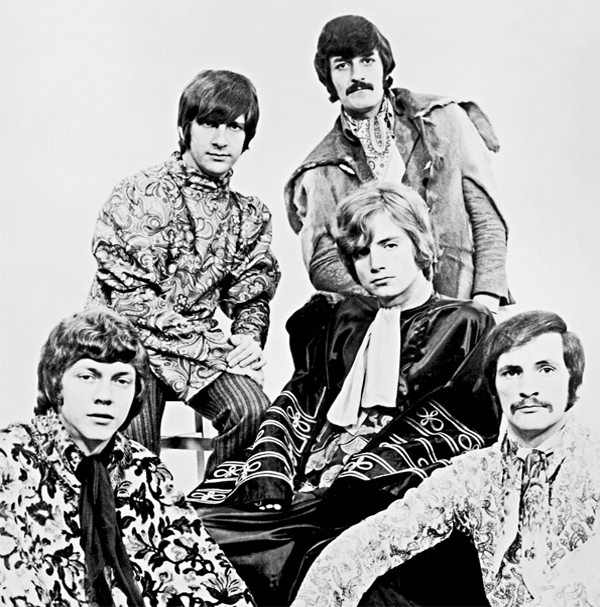
1965
“Go Now”  Live
Live  Video
Video 
1967
“Nights in White Satin”  Live
Live  Video
Video 
“Tuesday Afternoon”  Live
Live  Video
Video 
1968
“Ride My See-Saw”  Live
Live  Video
Video 
1970
“Question”  Live
Live  Video
Video 
“Question” - The Moody Blues 1970) Continued ...
The Moody Blues official site (The Moody Blues Discography) / Rock & Roll Hall of Fame / Billboard / All Music / Song Facts /
Ultimate Classic Rock / The Moody Blues
Image: “A Question Of Balance (album)” by The Moody Blues
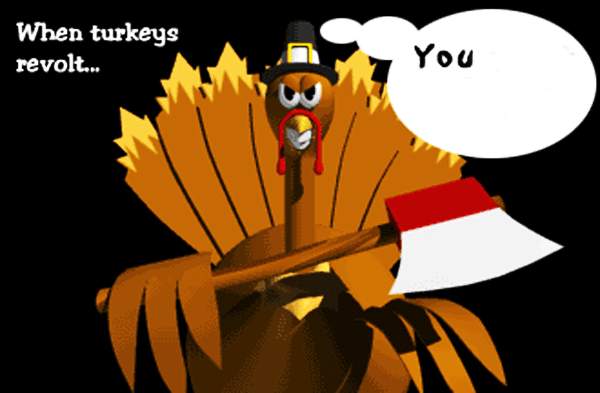
Trivia
● What year was the celebration that is most commonly considered to be the first Thanksgiving?
Answer to Trivia
● How long did the first Thanksgiving celebration last?
Answer to Trivia
● Under which president did Thanksgiving become an annual holiday?
Answer to Trivia
● In what decade did both the Macy’s Thanksgiving Day Parade and America’s Thanksgiving Parade start?
Answer to Trivia
● How do both Macy’s Thanksgiving Day Parade and America’s Thanksgiving Parade conclude?
Answer to Trivia
● Which president was the first to give a turkey a presidential pardon?
Answer to Trivia
Thanksgiving - Fact or Fiction
Fiction: In 1863, President Abraham Lincoln designated the last Thursday in November as a national day of thanksgiving. in 1939, after a request from the National Retail Dry Goods Association, President Franklin Roosevelt decreed that the holiday should always be celebrated on the fourth Thursday of the month (and never the occasional fifth, as occurred in 1939) in order to extend the holiday shopping season by a week.
Fact: In a letter to his daughter sent in 1784, Benjamin Franklin suggested that the wild turkey would be a more appropriate national symbol for the newly independent United States than the bald eagle (which had earlier been chosen by the Continental Congress). He argued that the turkey was “a much more respectable Bird”, “a true original Native of America”, and “though a little vain and silly, a Bird of Courage.»
Fiction: The Philadelphia department store Gimbel’s had sponsored a parade in 1920, but the Macy’s parade, launched four years later, soon became a Thanksgiving tradition and the standard kickoff to the holiday shopping season. The parade became ever more well-known after it featured prominently in the hit film Miracle on 34th Street (1947), which shows actual footage of the 1946 parade.
Fact: According to the Cape Cod Cranberry Growers’ Association, one of the country’s oldest farmers’ organizations, Native Americans used cranberries in a variety of foods, including “pemmican” (a nourishing, high-protein combination of crushed berries, dried deer meat and melted fat). They also used it as a medicine to treat arrow punctures and other wounds and as a dye for fabric. The Pilgrims adopted these uses for the fruit and gave it a name “craneberry” - because its drooping pink blossoms in the spring reminded them of a crane.
Fact: Turkey does contain the essential amino acid tryptophan, which is a natural sedative, but so do a lot of other foods, including chicken, beef, pork, beans and cheese. Though many people believe turkey’s tryptophan content is what makes many people feel sleepy after a big Thanksgiving meal, it is more likely the combination of fats and carbohydrates most people eat with the turkey, as well as the large amount of food (not to mention alcohol, in some cases) consumed, that makes most people feel like following their meal up with a nap.
Fiction (kind of): Domesticated turkeys (the type eaten on Thanksgiving) cannot fly, and their pace is limited to a slow walk. Female domestic turkeys, which are typically smaller and lighter than males, can move somewhat faster. Wild turkeys, on the other hand, are much smaller and more agile. They can reach speeds of up to 20-25 miles per hour on the ground and fly for short distances at speeds approaching 55 miles per hour. They also have better eyesight and hearing than their domestic counterparts.
Fact: The turkey trot, modeled on that bird’s characteristic short, jerky steps, was one of a number of popular dance styles that emerged during the late 19th and early 20th century in the United States. The two-step, a simple dance that required little to no instruction, was quickly followed by such dances as the one-step, the turkey trot, the fox trot and the bunny hug, which could all be performed to the ragtime and jazz music popular at the time.
Fiction: The American tradition of college football on Thanksgiving is pretty much as old as the sport itself. The newly formed American Intercollegiate Football Association held its first championship game on Thanksgiving Day in 1876. At the time, the sport resembled something between rugby and what we think of as football today.

Joke of the Day
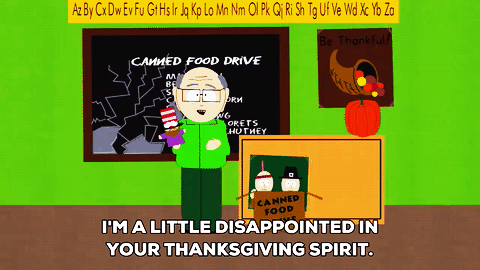
Teacher Teaching Class
A teacher is teaching a class and she sees that Johnny isn't paying attention, so she asks him,
“If there are three turkeys in a field, and you shoot one, how many are left?”
Johnny says, “None.”
The teacher asks, “Why?”
Johnny says, “Because the shot scared them all off.”
The teacher says,
“No, two, but I like how you're thinking.”
Johnny asks the teacher,
“If you see three women walking out of an ice cream parlor,”
“one is licking her ice cream,”
“one is sucking her ice cream,”
“and one is biting her ice cream.”
“which one is married?”
The teacher says,
“The one sucking her ice cream.”
Johnny says,
“No, the one with the wedding ring, but I like how you're thinking!”
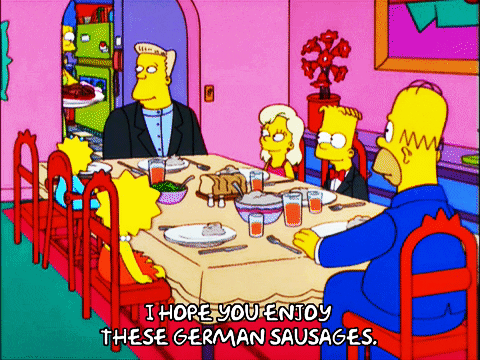
A Family Is At The Dinner Table.
The son asks the father, “Dad, how many kinds of boobs are there?”
The father, surprised, answers, “Well, son, a woman goes through three phases.”
“In her 20s, a woman’s breasts are like melons, round and firm.”
“In her 30s and 40s, they are like pears, still nice, hanging a bit.”
“After 50, they are like onions.”
“Onions?” the son asks.
“Yes.“ the father replies, “You see them and they make you cry.”
This infuriated his wife and daughter.
The daughter asks the mother, “Mom, how many different kinds of willies are there?”
The mother smiles and says, “Well dear, a man goes through three phases also.”
“In his 20s, his willy is like an oak tree, mighty and hard.”
“In his 30s and 40s, it’s like a birch, flexible but reliable.”
“After 50, After his 50s, it’s like a Christmas tree.”
“A Christmas tree?” the daughter asks.
“Yes.“ the mother replies, “Dead from the root up and the balls are just for decoration.”





























